Properly preparing yourself for a successful trek to Everest Base Camp is crucial when gearing up for this incredible adventure.
It involves doing research, planning carefully and getting ready in the right way.
In this article, you’ll find all the detailed information you need to prepare yourself for a successful trek to Everest Base Camp.
Trekking for 4 to 8 hours a day at high altitude for 11 days to reach the base camp of Mount Everest is not an easy feat for the average person.
Proper physical and mental conditioning are crucial for a successful journey.
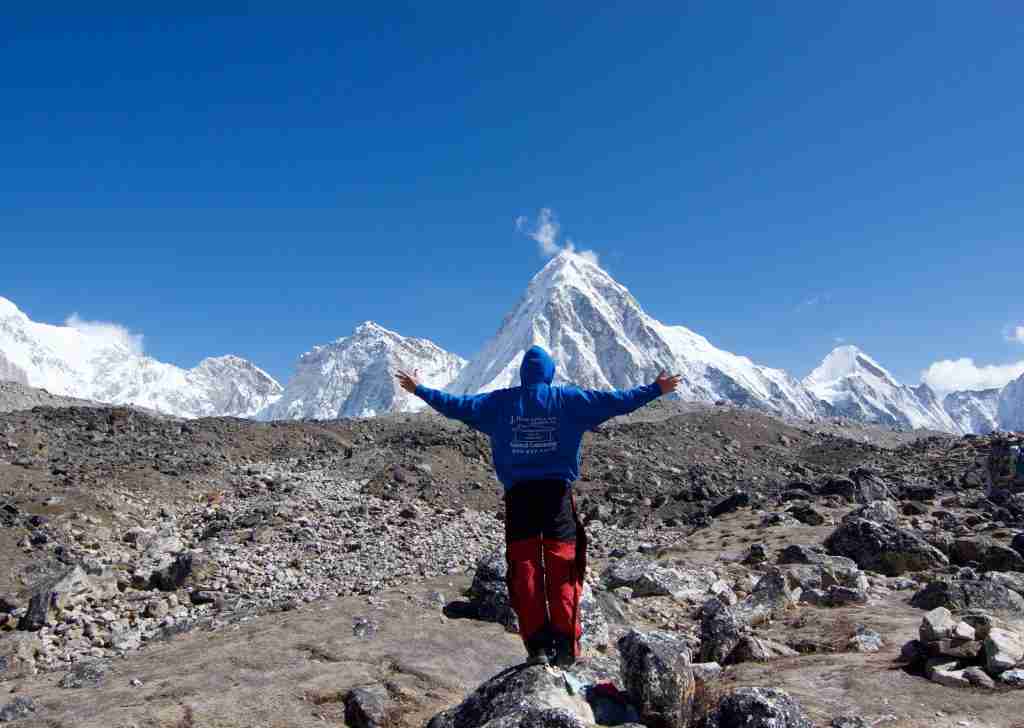
While the Everest Base Camp trek may not be a highly technical climb and one does not have to be a seasoned trekker to accomplish this goal.
It is crucial to be physically and mentally prepared for this epic adventure.
Want more information? Send us your query, and our experts will get back to you within 24 hrs.
Below is some information that will help you prepare for a successful Everest Base Camp Trek:
Table of Contents
- Proper Itinerary with Gradual Ascent
- Day 1 – Travel to Lukla and Trek to Phakding
- Day 2 – Trek to Namche Bazaar
- Day 3 – Rest and Acclimatization in Namche Bazaar
- Day 4 – Trek to Tengboche
- Day 5 – Trek to Dingboche
- Day 6 – Rest and Acclimatization in Dingboche
- Day 7 – Trek to Lobuche
- Day 8 – Trek to Everest Base Camp and Back to Gorak Shep
- Day 9 – Sunrise Hike to Kalapatthar and Trek to Pheriche
- Day 10 – Return Trek to Namche Bazaar
- Day 11 – Trek back to Lukla
- Day 12 – Fly back to Ramechap/Kathmandu and Transfer to Hotel
- Preparing yourself Physically and Mentally
- Packing for Everest Base Camp Trek
- While on the Trail
- In conclusion,
Proper Itinerary with Gradual Ascent
As you trek from Lukla to Everest Base Camp, you’ll experience a gradual increase in altitude.
Your journey will take you from the lowest point at 2610 meters in Phakding to the highest point at 5545 meters in Kalapatthar.
Usually, this journey takes 12 days.
Below is a recommended 12-day itinerary designed with a good understanding of adjusting to high altitudes and ensuring safety for trekkers.
This trekking plan has been carefully chosen after trying out various options.
We’ve successfully operated it for over a decade.
Day 1 – Travel to Lukla and Trek to Phakding
Start your adventure with a scenic flight to Lukla, known for having one of the world’s most exciting airport runways due to its short length and breathtaking Himalayan views.
Once you’re in Lukla, begin your trek towards Phakding.
The trail leads you through charming Sherpa villages, beside the Dudh Koshi River and through beautiful rhododendron and pine forests.
Note that if you are traveling to the Everest region during the peak season, flights to Lukla will operate from Ramechap.
This airport is approximately a 4-hour drive from Kathmandu. Speak to your tour operator if you would like to find out more about this arrangement.
Day 2 – Trek to Namche Bazaar
Today’s walk takes you to Namche Bazaar, a lively and happening Sherpa town that serves as a central point for trekkers, climbers and locals.
The trail includes some uphill stretches and as you go higher, you’ll enjoy clearer views of Everest and nearby peaks.
Day 3 – Rest and Acclimatization in Namche Bazaar
This day is focused on acclimatization, which is important for adjusting to higher altitudes and avoiding altitude sickness.
You’ll take a short trip to a higher area and then return to Namche Bazaar for the night.
This acclimatization hike helps your body adapt to the lower oxygen levels.
Day 4 – Trek to Tengboche
Set off on a picturesque hike to Tyangboche, where you’ll visit the renowned Tyangboche Monastery, one of the most important monasteries in the region.
Today’s trail treats you to magnificent views of Mount Everest, Ama Dablam, and other peaks.
The peaceful atmosphere of the monastery adds a spiritual touch to your journey.
Day 5 – Trek to Dingboche
The path takes you through alpine landscapes as you head to Dingboche.
With increasing altitude, the terrain becomes drier and the greenery lessens.
Panoramic views of the surrounding mountains continue to amaze you.
Day 6 – Rest and Acclimatization in Dingboche
Another day is set aside for acclimatization in Dingboche, aiding your body’s adjustment to higher elevations.
You will take a short walk to a higher point like Nagartang Peak, supporting your acclimatization while enjoying the stunning mountain scenery.
Day 7 – Trek to Lobuche
Today’s hike leads you to Lobuche, situated in the Khumbu Valley.
The trail gradually climbs, and you’ll notice the air getting thinner.
The landscape becomes more rugged and barren, creating a unique and unexpected beauty.
Day 8 – Trek to Everest Base Camp and Back to Gorak Shep
An exciting day awaits as you trek to Everest Base Camp.
EBC is the place where mountain climber begin their journey to reach top of Mount Everest (8,848,86 meters).
The trail can be challenging due to altitude and rocky terrain, but reaching the base camp and seeing the Khumbu Icefall is an exhilarating experience.
Afterward, return to Gorak Shep for the night.
Day 9 – Sunrise Hike to Kalapatthar and Trek to Pheriche
Early in the morning, hike up to Kalapatthar for breathtaking sunrise views of Everest and nearby peaks.
Then continue trekking to Pheriche, where the lower altitude offers some relief from the thinner air at higher elevations.
Day 10 – Return Trek to Namche Bazaar
Start your journey back by descending to Namche Bazaar.
The familiar landscapes and villages will evoke a sense of nostalgia, and you’ll appreciate the lower altitude as you continue downward.
Day 11 – Trek back to Lukla
The final part of your trek takes you from Namche Bazaar to Lukla.
This day is a time to reflect on your remarkable journey and the sense of achievement that comes with completing the Everest Base Camp trek.
Day 12 – Fly back to Ramechap/Kathmandu and Transfer to Hotel
Bid farewell to the Himalayan region with a scenic flight back to Kathmandu.
This is finally, the end of your adventurous trip.
Back in Kathmandu, take time to rest and reminisce about the unforgettable experiences and breathtaking landscapes you’ve encountered during your Everest Base Camp trek.
If you’re looking for a smooth operation, you can book our standard 14-day Everest Base Camp Trek package. This itinerary is incorporated in the 14-day trip.
For solo trekkers, it is recommended to prepare yourself to follow a similar itinerary with a gradual ascent to ensure proper acclimatization.
Preparing yourself Physically and Mentally
Now that you have planned a proper itinerary for your journey to EBC.
It’s time for you to prepare yourself for this great adventure you are planning.
Getting yourself physically and mentally ready is key for Everest Base Camp Trek.
This incredible journey includes walking on tough paths and facing high altitudes.
Here’s how you can prepare both your body and mind for the trek:
Talk to Your Doctor
Before you start cardiovascular or strength training to get ready for an EBC trek, it’s really important to talk to your doctor first.
This is especially true if you’ve had any health issues before.
Let your doctor know that you want to trek to Everest Base Camp and that you plan to do exercises like cardiovascular and strength training to prepare.
Follow the training plan as per doctor’s suggestion.
They know best and can help you do things the right way.
Your safety during the trek is really important and your doctor can give you good advice to make sure you’re ready and healthy for the journey.
Cardiovascular Training
It is an advantage if you engage in regular workouts and exercise as part of your daily routine.
If you already engage in activities such as walking, biking, or swimming throughout the year, you are already one step ahead in your cardio training.
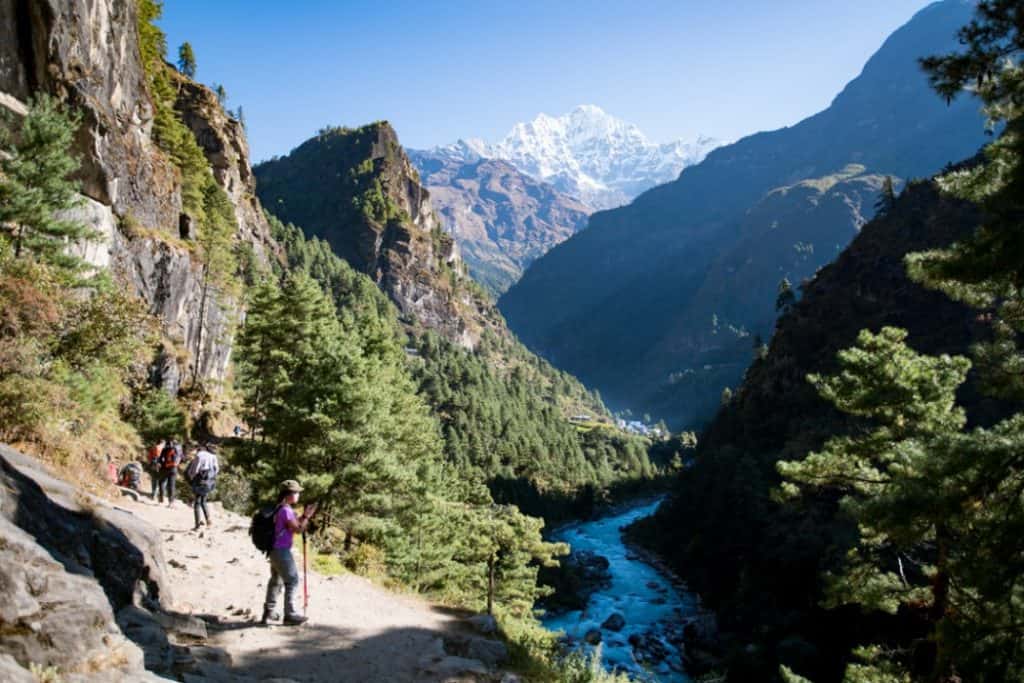
To take your training to the next level, consider incorporating routines such as stair training, trail running and hiking up and down hills.
It is recommended to perform cardiovascular fitness training at least six months before the trek, for 30 minutes, four times a week.
Each month, add 10-15 minutes to your routine and increase the frequency to six times a week.
To simulate the weight you’ll carry during the trek and get your back and shoulders accustomed to the load, it is advised to wear your day-pack or a weighted vest.
Strength Training
Strength training is crucial for conditioning your leg muscles, shoulders, abdomen, and back and should be an integral part of your overall preparation for the Everest Base Camp Trek.
In addition to your aerobic and cardiovascular training, incorporate key strength training routines such as pull-ups, sit-ups, crunches and military presses.
Aim to perform strength training at least three times a week, for 30 minutes per routine, starting six months before the trek.
As the trip approaches, increase the frequency and duration of the routines, but be sure to vary them to avoid boredom.
However, it is important to listen to your body and avoid over pushing yourself during your training.
Trekking and Altitude Conditioning
Including trekking and altitude conditioning in your preparation process is ideal.
Keep in mind that you will not just be trekking on flat terrain; you will also need to climb hills and slopes with challenging inclines.
While you cannot fully prepare for what’s in store during the actual trek, you can still engage in as much trekking as possible while at home.
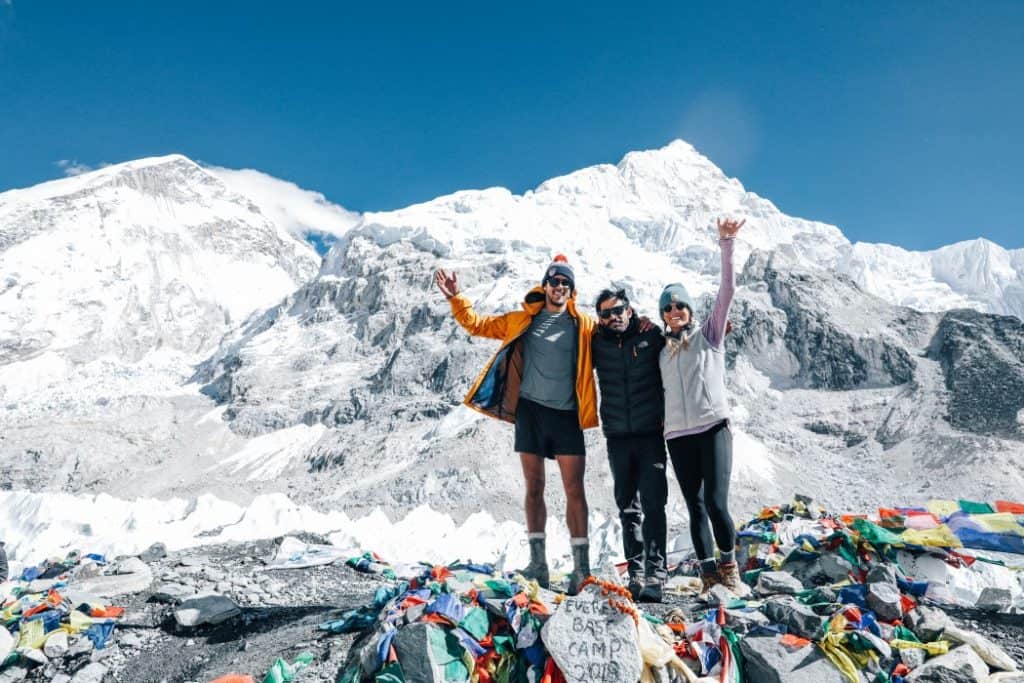
To start, take long walks around the city.
Trekking through the city while it’s snowing is also a great way to simulate the real trek to the base camp.
Another effective way to improve your trekking conditioning is to find a steep trail outdoors and trek it several times.
Try ascending around 2,000 feet of the trail with about 6 kilos (15 pounds) of load on your back.
To make the training easier, carry jugs of water in your pack so you can dump them at the top before descending.
Gradually increase the mileage, load and speed of each trek to become more accustomed to trekking in elevation.
It’s also important to include altitude training in your preparation.
While you can never truly prepare for the altitude of Mt. Everest Base Camp, you can include stair training in your routine.
Climb the stairs as hard as your body can manage, then descend at a slower and steadier pace.
Don’t forget to wear your pack while doing this.
It’s important to find a good pair of boots and wear them for several months before the trek to break them in properly.
Also, go on a day trek wearing the gear you intend to wear on the actual trek to test its durability and comfort.
This way, you’ll have more time to find a better replacement if necessary without being rushed.

Mental Conditioning
It is best to keep realistic expectations of the trip, from the logistics to the challenges along the way, in order to have a sound frame of mind throughout the entire trek.
Please keep in mind that teahouse accommodations in Nepal are basic but efficient.
Toilet situations could be challenging at times, so try to be creative and resourceful when needed.
Reach out to people who have tried trekking to the base camp and learn from their stories.
This way, you’ll be more mentally equipped to handle challenges and bring optimism to the forefront.
Another important caveat is that altitude sickness can rob you of your physical and mental energy during the trek.
Keep yourself hydrated, eat healthy food and bring adequate medication.
If required, let your guide know that you’re experiencing symptoms of altitude sickness and make a descent.
Remember, getting to the Everest Base Camp is not a race, it is an experience.
Descending temporarily is not losing, but just a safety protocol for you and your group.
Packing for Everest Base Camp Trek
Once you’ve planned your trip, organized your itinerary and prepared your body for this exciting journey, it’s time to decide what to pack for the trek.
Having the right gear and clothing is essential.
No matter how much you’ve trained or planned, without proper equipment, you won’t be able to fully enjoy your trip.
Start by researching everything from suitable footwear to appropriate headwear.
Invest in good quality boots and make sure to break them in before the trek.
Alongside boots, gather general hiking gear and clothing suitable for the weather conditions you’ll encounter on the EBC trek.
It’s a good idea to purchase high quality gears such as a sleeping bag, down jacket and warm clothing.
For more guidance, take a look at our comprehensive Ultimate Packing List for Everest Base Camp Trek.
This resource will help you pack your bag thoroughly and ensure you’re well-prepared for a successful trek to Everest Base Camp.
While on the Trail
Now that you are prepared, have packed your bag and are ready to go, ensure you follow some guidelines while on the trail.
Here is important information you should know while trekking from Lukla to Everest Base Camp.
Hydration and Nutrition
During your trek, ensure you eat properly and consume plenty of fluids to keep your body energized and hydrated for this challenging hike.
Stay well-hydrated by drinking around 3 to 4 liters of water every day and maintain a balanced diet rich in protein, carbohydrates, healthy fats and vitamins.
Proper nutrition and the right amount of fluid intake support your body’s energy levels and recovery.
Some trekkers may lose their appetite at higher altitudes.
If you experience a loss of appetite but intend to continue trekking the next day, make sure to consume proper nutrition and fluids.
Rest and Recovery
Always remember that rest is a crucial factor in successfully completing the EBC trek.
Give your body time to recover between each day’s hike.
Avoid pushing yourself too hard; walk slowly and steadily.
Neither run nor walk too fast.
Maintain a leisurely pace, enjoy the surrounding environment and allow your body the time it needs to recover with each step you take.
Take Altitude Sickness Seriously
If you are part of an organized tour, your guide will regularly assess you.
If you experience any symptoms of altitude-related sickness, speak to your guide immediately.
Do not attempt to exceed your limits.
If you are trekking solo, ensure you are well-informed about altitude-related issues, take necessary precautions and regularly assess your own condition.
If you feel something is amiss, descend immediately.
Do not entertain the thought of climbing further in the Himalayas- not even a meter.
Taking altitude sickness seriously is crucial; heed your body’s signals and proceed cautiously.
If you are unable to complete the trek this time, remember there’s always a next opportunity.
Listen to Your Guide
Guides are your best companions on the mountain.
They know the trail, conditions and how to handle various situations.
They have led many trekkers before you and are familiar with the mountain’s challenges.
Disregard your guidebook and do not rely on the advice of other trekkers, even if they are medical professionals.
For a successful trip, always prioritize the guidance of your best friend on the mountain – your guide.
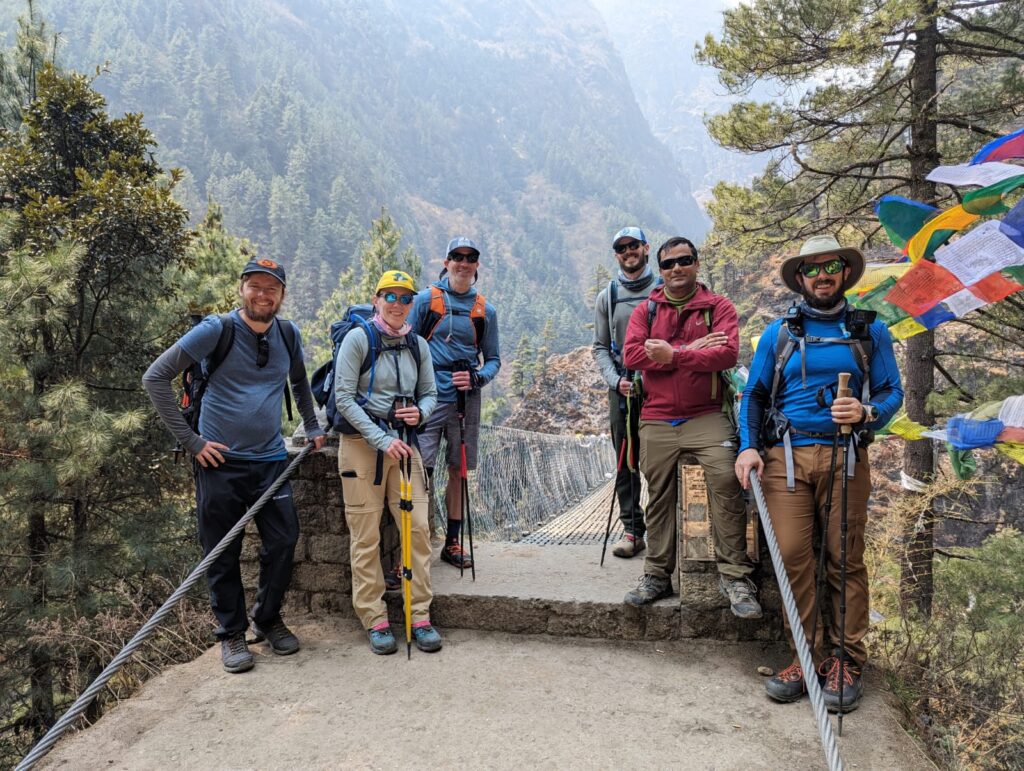
In conclusion,
Going on the Mount Everest Base Camp trek, in actual, will feel very different from your training.
But once you’re ready in body and mind, you’ll be all set to go.
Remember, this trek isn’t like a marathon; your safety matters most.
So, walk at a steady pace, drink enough water, eat meals that give you energy and have the determination to reach your goal.
When you arrive, you’ll see that your months of training were worth it.
You’ve done a lot to get ready: you’ve looked at the route, made sure you’re physically and mentally prepared, packed the right gear and clothes and learned about what to do on the trail.
It might seem like you’re totally prepared for the journey.
Still, remember that you’ll truly know if this trek suits you when you’re actually on the trail.
The Himalayan mountains give every trekker who comes here a special and varied experience.
Guides who often lead the way to the base camp say they love each time because the Himalayas show them something different every time.
If you’ve already finished this trek, please share your thoughts below in the comments on how you got ready for a successful trip to Everest Base Camp.
Want more information? Send us your query, and our experts will get back to you within 24 hrs.
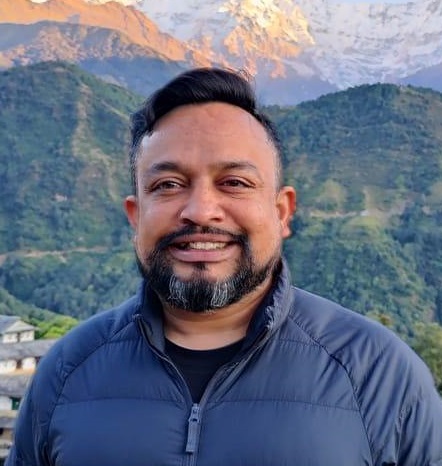
Raj is the co-founder of Mosaic Adventure who have immense knowledge of all the trail throughout Nepal. Working on the trekking industry for more than three decades Raj knows the country like back of his hands. If you need more information or help to plan any trips to Nepal, feel free to get in touch with Raj through his email [email protected] or whatsapp him on +9779851090836.


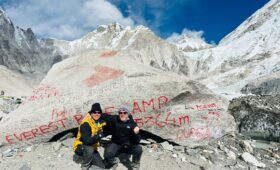

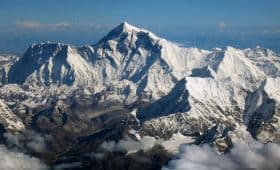
Hey There. I found your blog using Google. This is a very well written article. I’ll be sure to bookmark it and come back to read more of your useful info. Thanks for the post.